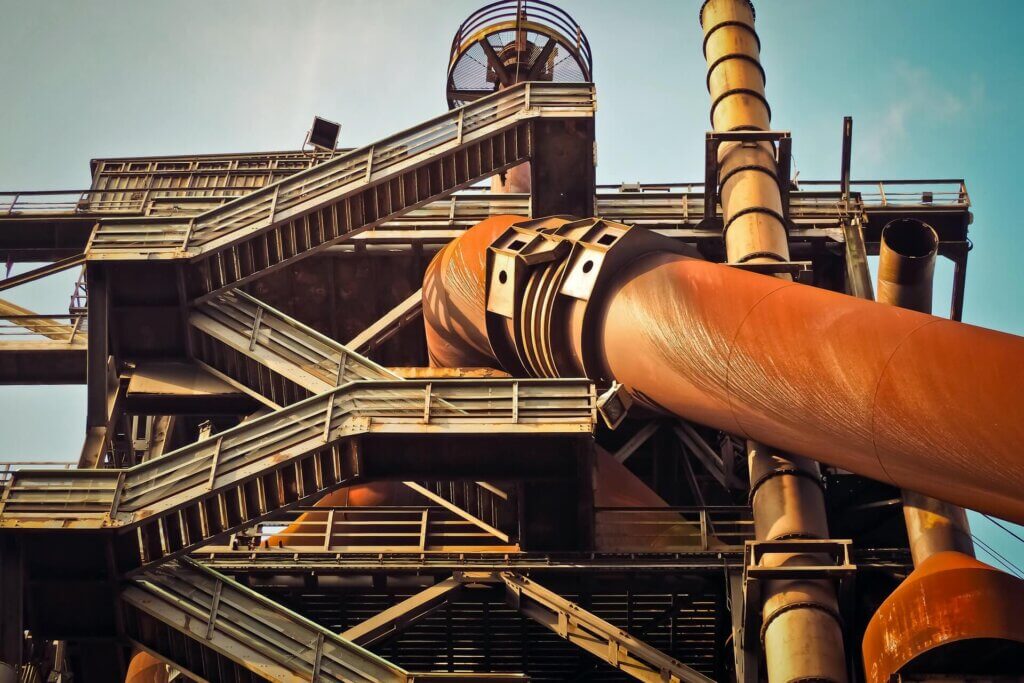If you ever worked in a B2B startup, you know that you are chasing opportunities. A large potential customer comes in, and you need to shift priorities to do whatever it takes in order to convert them. In most cases, there is so much that you need to do to make it happen. Everyone works really hard, and the success rate is far from 100%.
Sounds familiar? Let’s see why it happens.
Think about your sales funnel like a pipe. I like to describe it using Dave McLure’s AARRR framework: you are pouring leads into the pipe on the left, and you get happy customers on the other side of the pipe on the right.
Phase I: Blocked Pipe
The problem is that when you start, your pipe is blocked. You can’t really convert them all the way to the other side on the first attempt, and usually not on the second either. On a B2B startup, it can look something like this: people are willing to talk to you, and you get a few POCs. That’s the first 2 A’s. Some of the POCs don’t really get off the ground. They don’t actually use the product, or not as frequently as you would like them to. You failed the first R – retention. That’s where your pipe is blocked. You understand that, and you work hard to make sure the other POCs do better, and they actually use the product. But when it comes to the next R – revenue – you are facing issues again. Maybe your business model is not suitable for what your customers need, or the price is not a good fit, or, as it turns out to be in many cases, the problem wasn’t big enough for them to justify any payment, although they were happy to try your product out. Now your pipe is blocked at the second R. When you resolve that and get to happy, referencable, paying customers, congratulations are due – your pipe is no longer blocked!
For a B2C startup (say a mobile app of some sort), the details are different but the idea is the same: initially, they will hear about you but won’t download the app. Then some download it but never use it. They sign in, play with it for a few minutes, and never return. You work hard to simplify the onboarding process and make sure they get value early on, and you start seeing some retention. None of them pay yet, but maybe your focus is to get traction (luckily revenue and reference both start in R, so the model still works). Eventually, you get your paid offer right, and some people convert. Congratulations again – your pipe is no longer blocked.
Phase II: Clogged Pipe
Unblocking the pipe on phase I above is a huge milestone. But it doesn’t mean that once you did it, you can do it again. It means that customers can now run through the pipe, but only customers that are very similar in their needs and other characteristics to the first ones you had above. The path that you opened through the pipe is exactly carved for those customers since that’s how you have created it. Your pipe is not blocked entirely, yet it’s not unblocked either. It’s clogged.
Now imagine what happens when more and more leads are pouring into the pipeline. While some of them move through the pipe more easily than others, there is still work to be done even for those who move relatively easily. The reason for that is that your pipe was shaped exactly around your customers from the previous phase, and these new customers are usually somewhat different. Even if they are very similar, what worked for the first ones might not work again. There could be hidden characteristics like how much they like innovation, or you could have just gotten lucky. It could be that these first customers are people who knew you or someone else from the company in person, and that makes a ton of difference.
In simple words, if your potential customer profile isn’t almost identical to the ones you converted before, this customer won’t convert without additional work on your side. But if you don’t see that upfront, you cannot act upon it.
So here you are, working on converting potential customers again. Since you want to convert each and every one of the new customers in the pipeline, you are willing to do a lot of work to get them converted. It sounds trivial, but the problem is that the work needed to get all of them converted is typically not the same. So while you are working very hard, your final result is multiple customers in various stages of the pipe, but very few that actually make it to the end of it and give you revenue and references.
In other words, instead of having great conversion for one type of customer and then for another, you have a partial conversion for many types of customers. Unfortunately, that means no conversion at all, since it’s the bottom line that counts.
Where the Leaky Bucket Model Fails
If you are in the clogged pipe phase and looking to see if your bucket is leaking, you will most likely not see any leaks, especially in B2B companies. These potential customers are not dropping from your pipeline, since you are doing whatever you can to keep them in. But since they are not converting all the way down to revenue and reference either, they keep piling up on earlier parts of the pipe.
When you keep pouring water at high pressure into a clogged pipe, eventually it will burst. What this means is that you now have the worst of both worlds: they didn’t convert to happy, referencable, paying customers because you couldn’t satisfy their needs, but you also worked very hard in the attempt to do so. This hard work might not be completely wasted in the long run (because you do want to support these types of customers eventually), but it gave you no results in the meantime. A pile of half-baked customers is not what you are looking for.
If you could know in advance which customers are most likely to convert all the way to the end of the pipe and which aren’t, this would have been a powerful tool right? You would probably invest the hard work on those who are more likely to become happy, referencable, paying customers.
The good news is that you can actually know that, at least to some extent. It starts with a deep understanding of your customers’ needs. When you understand your first customers well (including why they chose you, what alternatives they considered, why they sought a solution now etc.) you can mark the pieces of it that made the difference and made them convert. When a new potential customer comes in, look for these characteristics to see if they are there. If not, you can still work with them, but before you invest a lot of effort into converting them, look for other signals that they will actually convert.
Generally speaking, once you converted your first customers, you want to look for additional ones as similar to them as possible. It is more likely that similar ones would convert more easily since you already have a path in the pipe that is shaped somewhat like them for them to move through.
Once you repeat that process enough times, you will have a smooth path in your pipe for customers of this type to move through. Congratulations! Now your pipe is unblocked, but only for this specific customer type.
Phase III: Unblocked Pipe
Now, when certain types of customers already move smoothly through your pipeline, you can shift your resources to adding support for additional types of customers. In other words, go back to phase I. The difference is that now you are opening another path in the pipe, while there is one that is already working well. The pressure in the pipe is lower, and it is less likely to burst.
In other words, now you can actually support the next type of customers and give them the attention they need to get them converted. Here too you would need to make sure you are not working on too many types of customers simultaneously because you will find yourself in the work-hard-no-results situation again.
Note that when it comes to types of customers, god is in the details. It doesn’t necessarily mean very different segments – for example, SMB vs. enterprise. It can mean that within your SMB target market, some need your product more than others. Nail it for them, and only then move to support the SMBs who are up next in line in terms of how much they need your solution or the value they can get from your product.
Assess yourself: which phase is your product currently in? Are you pouring water at high pressure into a clogged pipe? How close is the pipe to bursting and potential customers are to leaving the pipeline? Are you putting a lot of effort into converting customers that are less likely to convert? Start considering all of these in your prioritization, to make sure you are working on the most impactful things, not on pipe dreams.











